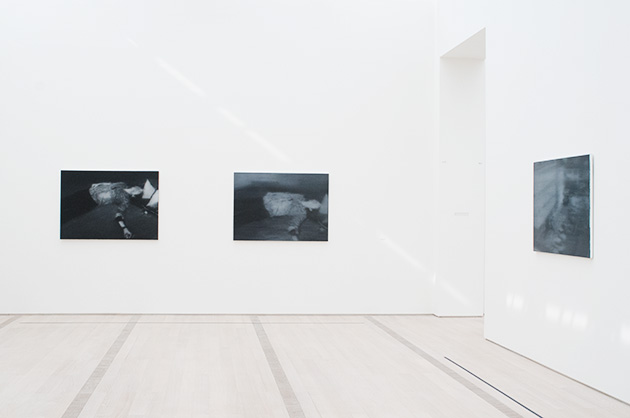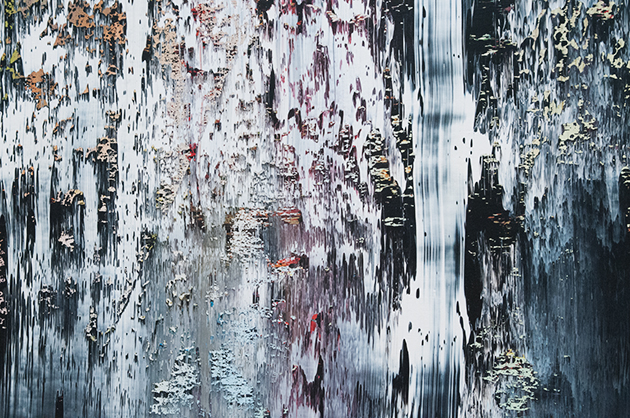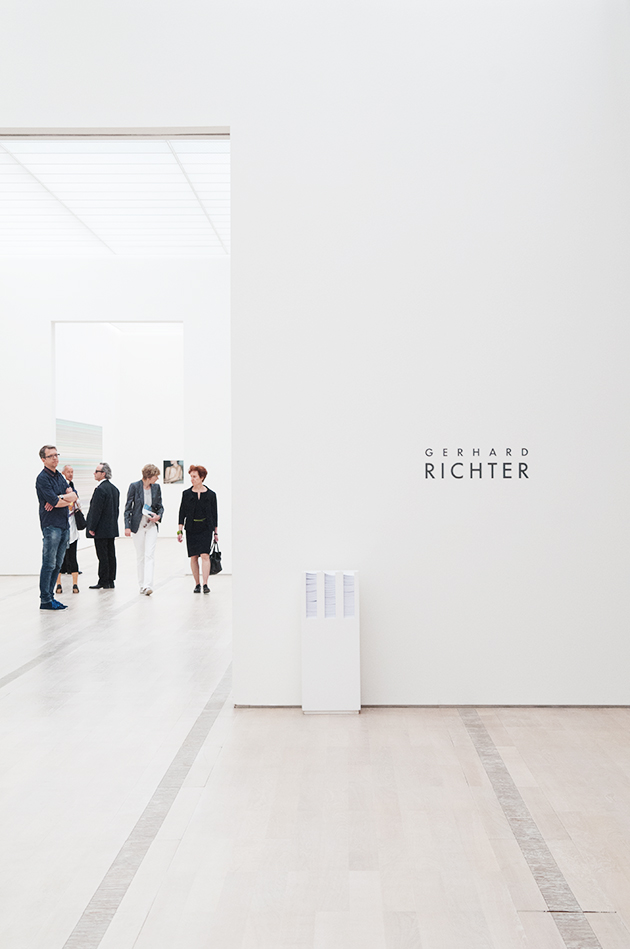
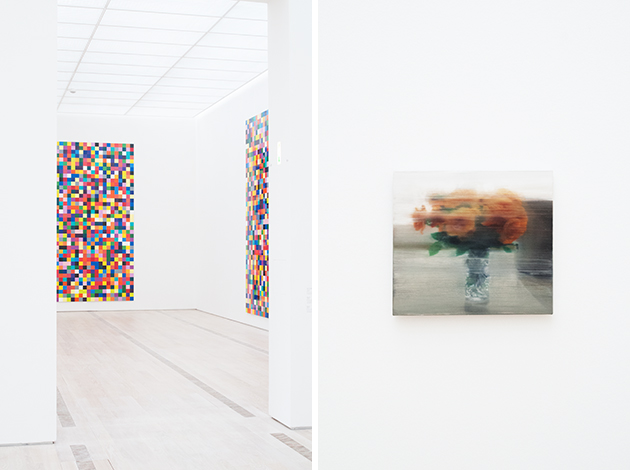
As every year, during Art Basel, the Swiss city turns itself into a hub of contemporary art, attracting collectors, art players and lovers from all over the world; but the secret of this success is not just due to the international fair, though it is undoubtedly one of the well-known and most visited. What makes it “a place to go” is also the list of outstanding art institutions offering high-level program of talks and exhibitions accompanying the event, which become memorable experiences. Soon after reaching Basel, our first stop is Fondation Beyeler, the perfect building designed by Renzo Piano that, as usually, pays tribute to a giant of art: this is the turn of Gerhard Richter (b. 1932, Dresden, Germany), one of the most important artists of our time. Following on from Panorama – the huge retrospective, which celebrated the artist’s 80th birthday at Tate Modern in London, the Neue Nationalgalerie in Berlin and Centre Pompidou in Paris in 2011-12 –, the Foundation hosts an exhibition entitled Pictures/Series, curated by Hans Ulrich Obrist, that puts together, for the first time, Richter’s works conceived as series and cycles.
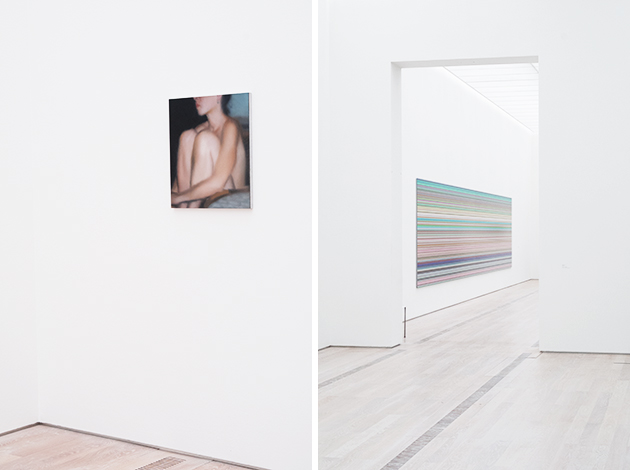
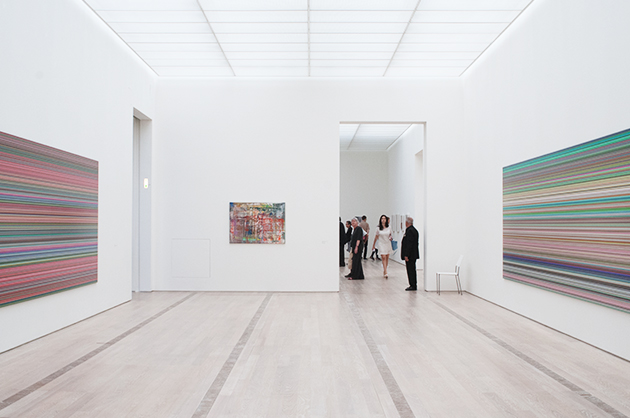
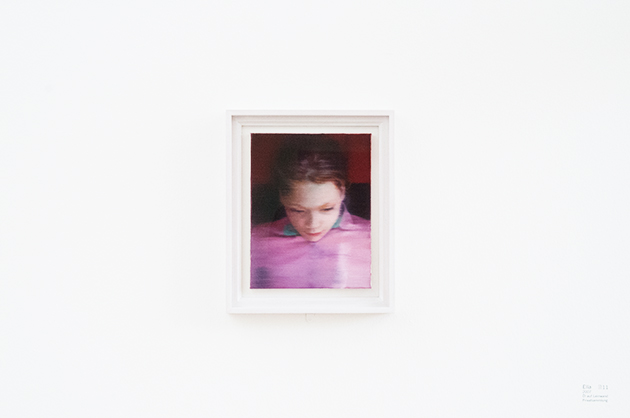
Floodlit by the natural light coming from the ceiling and the huge walls/windows, the show presented a stimulating selection that encompasses the artist’s career over the last sixty years, displaying figurative works, including portraits, land and seascapes, abstract paintings, Greys and Color charts, photographs and digital prints. After the wall-size color chart entitled 1024 Colors (1973) that greets the visitors in the foyer along with two graceful small flowers paintings, the exhibition path goes on with the eight-part S. and Child (1995), which recalls the Virgin and Child theme through the representation of real portraits, but depicted with different stylistic approach and levels of abstraction. From the monumental and controlled pictures of Strip (2013) to the as much large-scale canvases of Cage (2006) – layered surfaces, scratched and erased while listening to the American composer, John Cage –, passing through the Abstract Painting, Rhombus (1998) and the Gray (1975) monochromes, there is space for individual works such as the poetic and emotional Seascape (1975) and Iceberg in Mist (1982) – Greenland landscapes shrouded in mist and mystery –, the delicate and iconic Ella (2007), Small Bather and Reader (both 1994), Betty (1988) and Torso (1997).
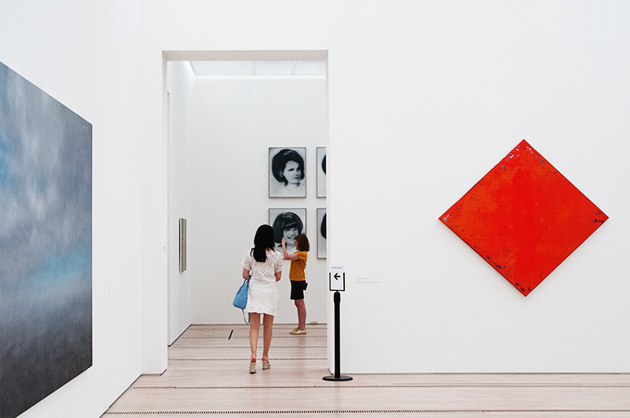
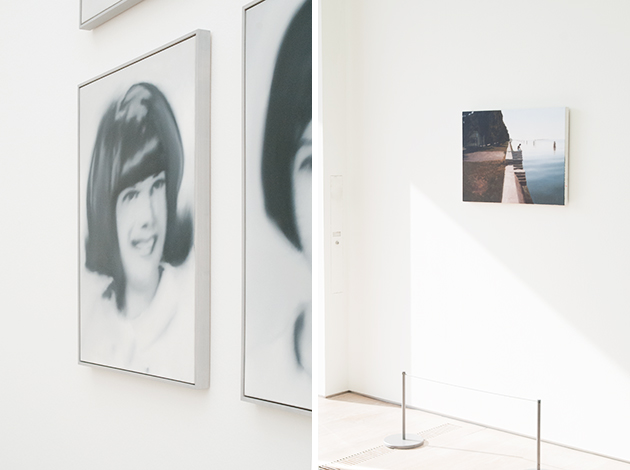
The Annunciation after Titian (1973) and the cycle October 18, 1977 (1988) merit a special attention. The former offers the rare opportunity to see all together the five paintings inspired by the old master, catching Richter’s personal process of abstraction and continuous variation; while the latter, consisting of 15 blurred and dark paintings that reproduce press images of the members of the German terrorist group Red Army Faction (RAF), presents a historical and controversial issue from a human and pensive way. “Picturing things, taking a view, is what makes us human; art is making sense and giving shape to that sense. It is like the religious search for God.” The unmissable exhibition will run until September 7th, 2014 at Fondation Beyeler.
